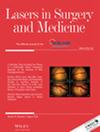A Comparitive Study Between Early Outcomes of Laser and Lay-Open Technique in Management of Simple Pilonidal Sinus
Abstract
Background
Pilonidal sinus (PS) predominantly impacts adolescent and young adult males. This condition may be asymptomatically or escalate to painful acute abscesses and recurrent discharge.
Objective
To evaluate the early postoperative outcomes of laser therapy compared to the lay-open technique in the treatment of chronic pilonidal sinus disease.
Methods
Prospective randomized comparative study including 40 patients, divided into two equal groups: (a) The SiLaT group: PS treated with diode laser therapy (SiLaT) and (b) the lay-open group: PS treated with lay-open (sinotomy). Postoperative outcomes such as operative time, hospital stay, pain scores, healing time, complications, and recurrence rates were analyzed.
Results
Operative time was significantly shorter in the SiLaT group (18.4 ± 2.1 min vs. 26.2 ± 3.7 min, p = 0.022). Hospital stay was shorter in the SiLaT group (6.60 ± 1.47 h vs. 15.10 ± 5.52 h, p < 0.001). Pain scores were lower in the SiLaT group (2.30 ± 0.92 vs. 4.80 ± 1.01, p < 0.001). Wound healing was significantly faster in the SiLaT group (10.1 ± 2.7 days vs. 34.1 ± 15.1 days, p < 0.0001). Recurrence rates (p = 0.998) and surgical site infection (p = 1.00) were comparable among both groups.
Conclusion
Sinus laser therapy (SiLaT) demonstrated superior early outcomes, including faster recovery, reduced pain, and fewer complications with earlier resumption of daily activities compared to the lay-open technique. However, recurrence rates remain similar, necessitating long-term studies to evaluate its effectiveness as a first-line treatment. These findings support the use of SiLaT as a day-case surgical procedure, for treating simple PS disease, particularly in young active patients seeking rapid recovery with minimal morbidity.

 求助内容:
求助内容: 应助结果提醒方式:
应助结果提醒方式:


